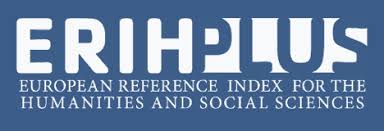№2, 2022
Today, the market for civil and commercial use of drones is actively developing, while the risks associated with their use are also increasing. At the same time, according to market research data from leading foreign companies, the rapidly developing market for civil and commercial use of drones has the greatest growth potential. Therefore, drone legislation is developing rapidly and is being improved every year. However, now it has come to a state of relative stability, allowing us to assert those general rules that will apply for a long time. The proper implementation of laws on the usage of unmanned aerial vehicles (UAVs), commonly known as drones, is proposed for the successful innovation and development of infrastructure and agriculture in the Republic of Azerbaijan. Through the clear enforcement of laws and guidelines of UAVs, involving registration, certification, and regular surveillance of UAVs by the National Aviation Academy, the implementation of drones will be systemized, paving the way for further innovative development of Azerbaijan (pp.30-37).
- Communications Review (2017). PricewaterhouseCoopers, https://www.pwc.com/gx/en/communications/pdf/communications-review-july-2017.pdf
- Industry, Innovation and Infrastructure (2021). Development Data and Outreach Branch, UN Statistics, https://unstats.un.org/sdgs/metadata/?Text=&Goal=9
- Kitonsa, H., Kruglikov, S.V. (2018). Significance of Drone Technology for Achievement of the United Nations Sustainable Development Goals, R-Economy, 4(3), 115-120.
- Clarity from Above: Transport Infrastructure. (2017). PricewaterhouseCoopers. https://www.pwc.com/kz/en/services/drones-technologies/transport-infrastructure-eng.pdf
- Clarity from Above: PwC Global Report on the Commercial Applications of Drone Technology, (2016). PricewaterhouseCoopers. https://www.pwc.com/kz/en/services/drones-technologies/clarity-from-above-eng.pdf
- Da Silva, J.G. (2022). Feeding the World Sustainably. UN Chronicle. https://www.un.org/en/chronicle/article/feeding-world-sustainably#:~:text=According%20to%20estimates%20compiled%20by,toll%20on%20our%20natural%20resources
- Mikhailova, S. (2022). Using Ex-military Drones to Plant Trees. (2022). Pro Journo, The Huffington Post. https://www.huffpost.com/entry/using-ex-military-drones_b_8414532.
- Mahajan, U., Bundel, B.R. (2016). Drones for Normalized Difference Vegetation Index (NDVI), to Estimate Crop Health for Precision Agriculture: A Cheaper Alternative for Spatial Satellite Sensors. International Conference on Innovative Research in Agriculture, Food Science, Forestry, Horticulture, Aquaculture, Animal Sciences, Biodiversity, Ecological Sciences and Climate Change, Jawaharlal Nehru University, (pp. 39-41).
- Registering to Use a Drone or Model Aircraft. (2022). Civil Aviation Authority, Department for Transport, United Kingdom, https://register-drones.caa.co.uk/individual.
- FAA, UAS Remote Identification Overview. (2022). Federal Aviation Academy, U.S. Federal Government. https://www.faa.gov/uas/getting_started/remote_id/
- FAA, FAADroneZone. (2022). Federal Aviation Academy, U.S. Federal Government, https://faadronezone.faa.gov/#/
- English: ישראל. Drone organization. (2022). Israel Drone Organization, https://www.icd.org.il/english





.jpg)









